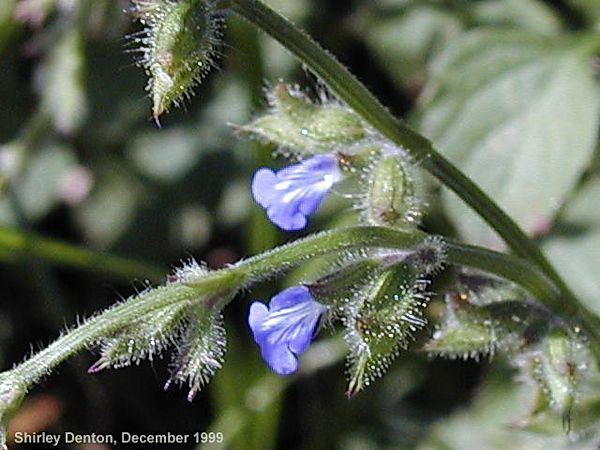FNPS Plant Database
Salvia misella
Nomenclature
Common Name:
Synonym(s):
Genus species:
Family:
Lamiaceae
Plant Specifics
Form:
Size:
Life Span:
Long-lived perennial
Flower Color:
Fruit Color:
Phenology:
Noted For:
Landscaping
Recommended Uses:
Considerations:
Availability:
Propagation:
Light:
Moisture Tolerance:
Always Flooded---------------------------------Extremely Dry
□□□□□□□□□□□□□□□□□□□□□■■■■■■■■■■■■■■■□□□□□□
Somewhat moist, no flooding -to- Somewhat long very dry periods
Salt Water Flooding Tolerance:
Unknown
Salt Spray/Salty Soil Tolerance:
Low/no tolerance of salty wind or direct salt spray
Soil or Other Substrate:
Sand
Soil pH:
Suitable to Grow In:
9A,9B,10A,10B,11

USDA zones are based on the average annual extreme minimum winter temperature.
Don't know your zone? Click here to search by zip code.
Ecology
Wildlife:
- Larval host for Fulvous Hairstreak.
- Attracts pollinators
Native Habitats:
Comments:
Ethnobotany:
General Comments:
Depending on cold, this may keep its leaves all year or die back during the winter. In colder areas, consider growing it as an annual. It adapts well to semi-shady to shady well-drained conditions.
Herbarium specimens from Marion and Alachua counties were in disturbed "garden" localities - not mapped here. Not planted, but highly unlikely to have appeared other than through human disturbance.







